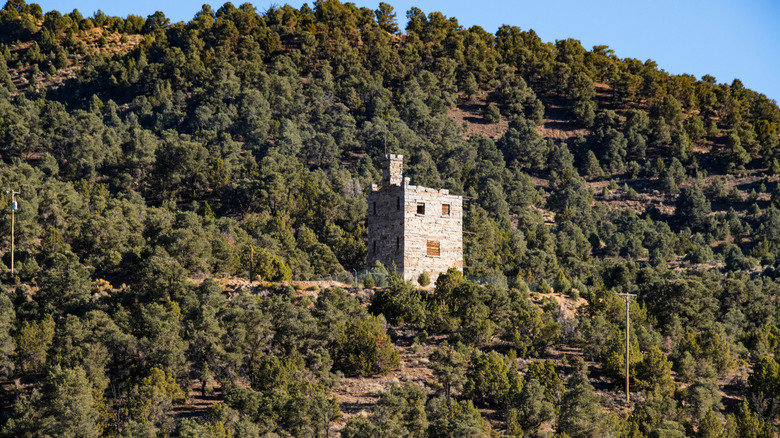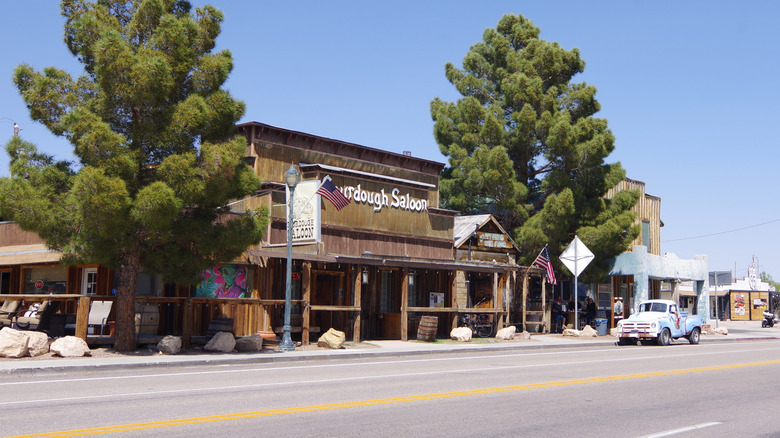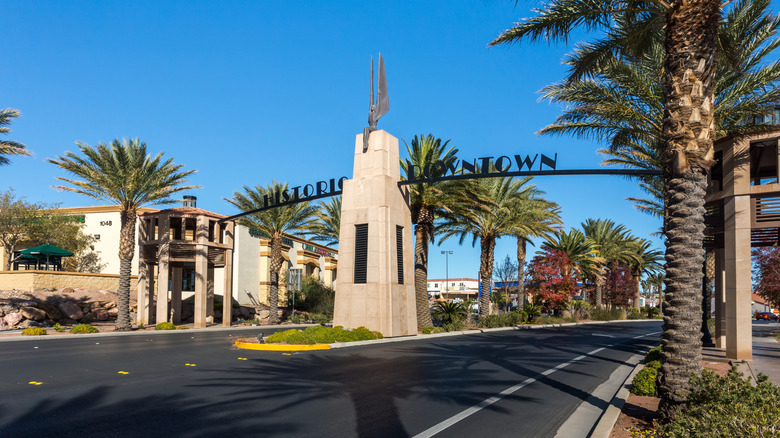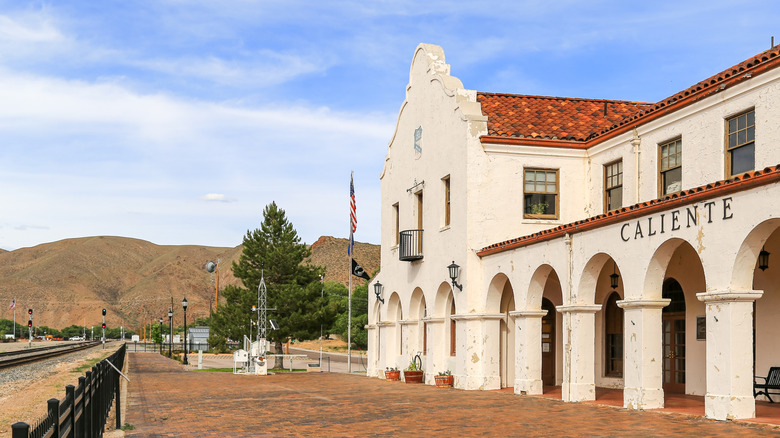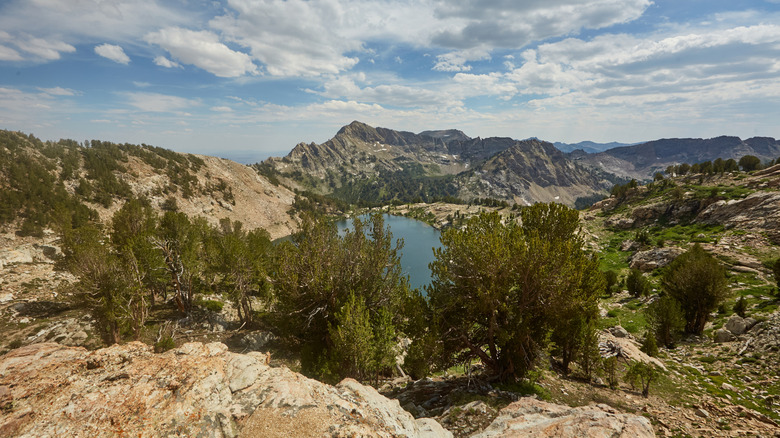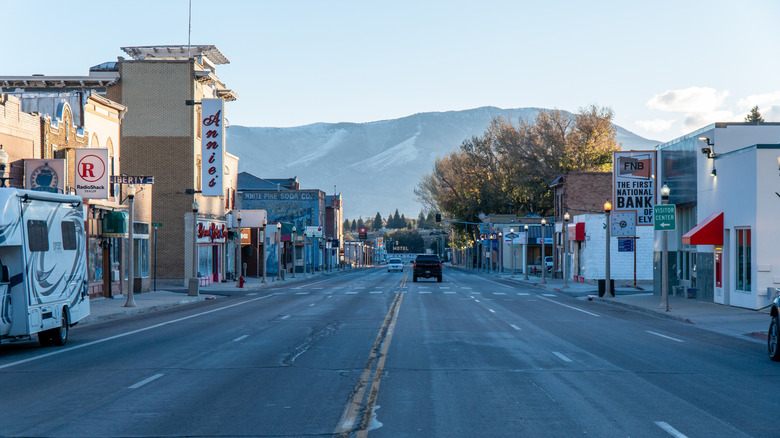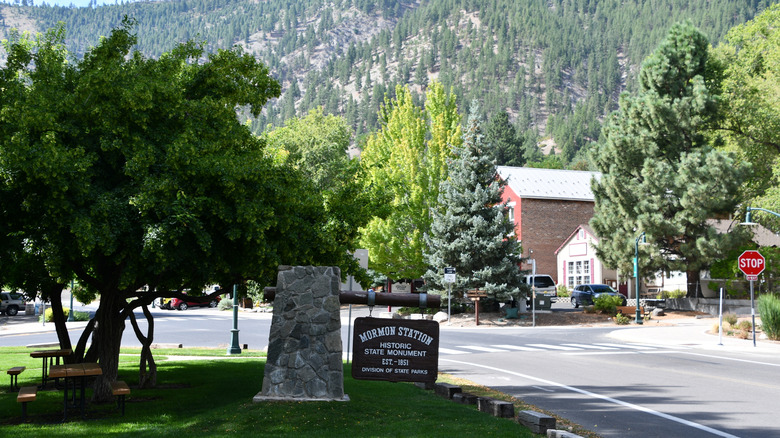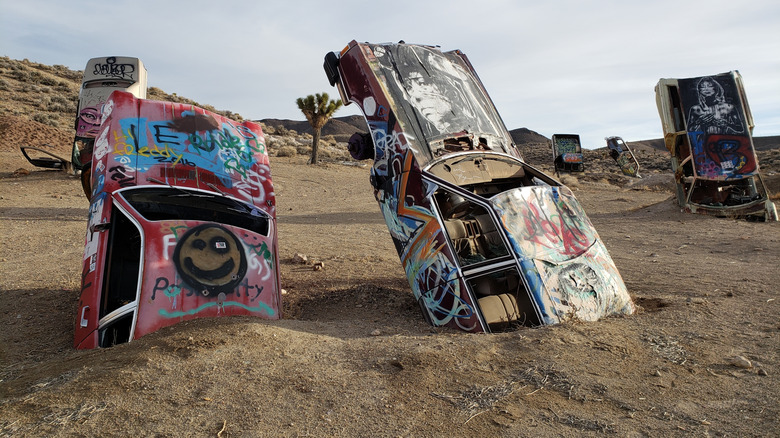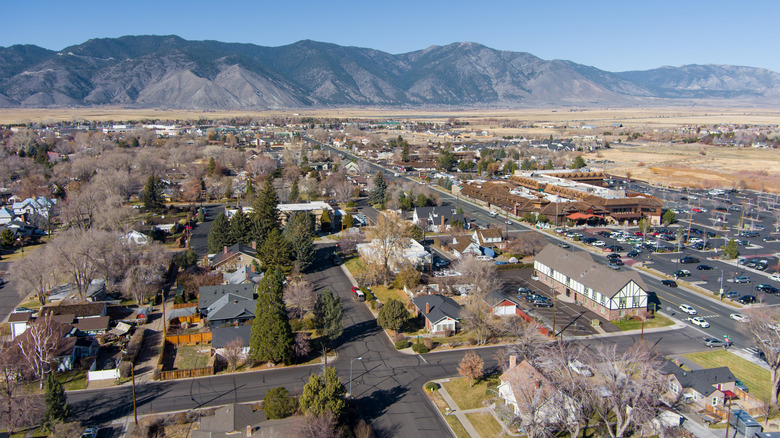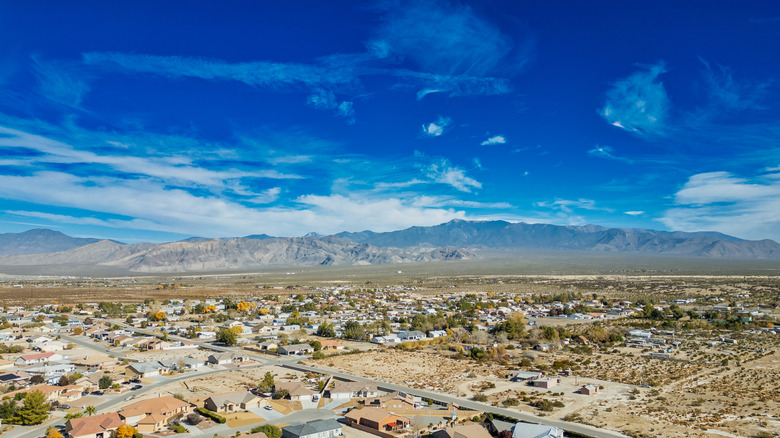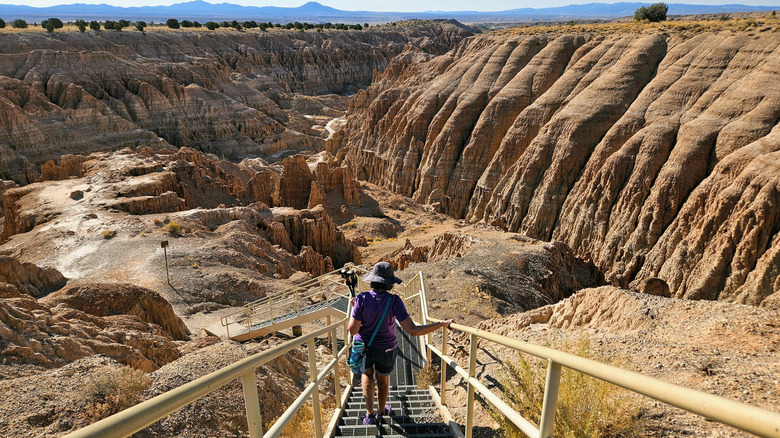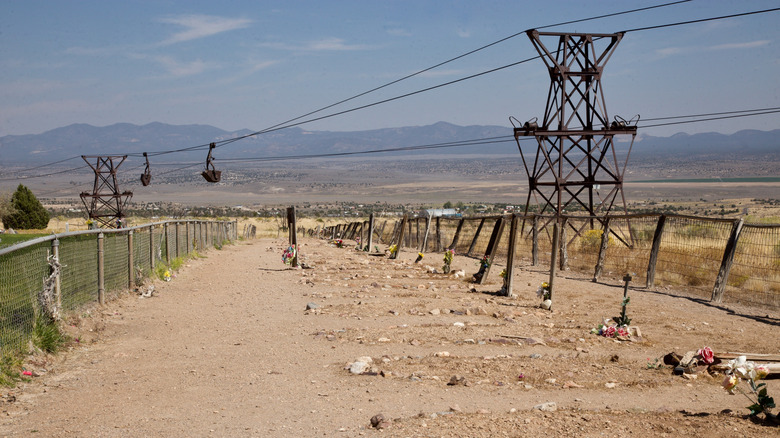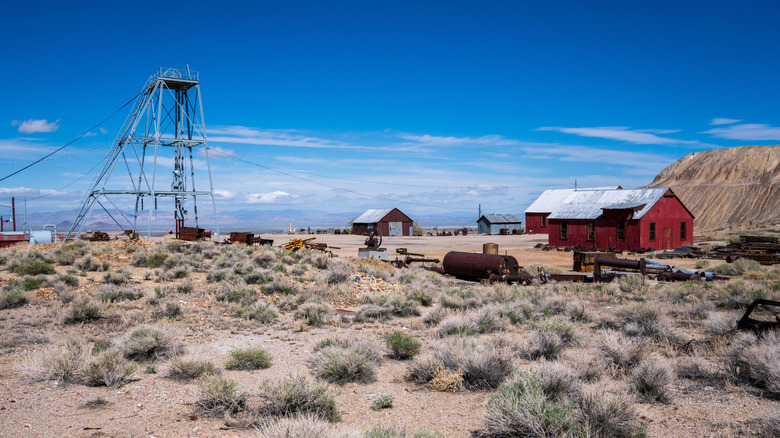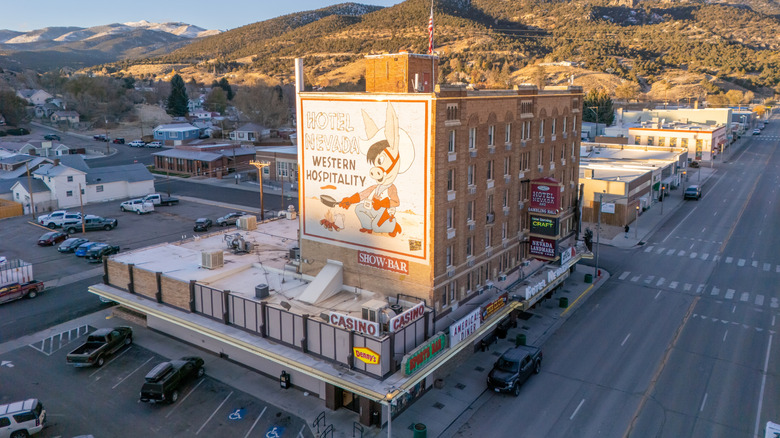Nevada's Most Beautiful Small Towns Provide Mountain Views, Tranquil Surroundings, And A Wealth Of Hiking Trails
The Silver State in the Southwest is on everyone's radar, but a lot of that is down to the glitz and glamour of Las Vegas. Sin City is understandably the focal point of tourism in Nevada, welcoming more than 40 million visitors each year. In a state of just over 3 million residents, Las Vegas and its surrounding towns hold more than a third of the population, but Nevada is also home to much more. For starters, visitors can take a family-friendly road trip around Lake Tahoe (which Nevada shares with California) or hang out with prehistoric beasts at Berlin-Ichthyosaur State Park.
Outside of natural wonders, Nevada is peppered with beautiful small towns. These settlements offer visitors the chance to soak up some charm and experience an intimate ambience while also taking in stunning views of deserts and mountains, and many also promise fabulous opportunities for hiking nearby. We've scoured travel sites and local tourism offices to come up with the most beautiful towns that Nevada has to offer, places that provide a strong contrast to the neon chaos of Sin City. Let's have a look.
Austin
Located east of Reno, Austin is surrounded by mountains and is a dream for hikers and skiers. It also promises a sense of the Old West, with the Gridley Days Rodeo taking place over July Fourth weekend. Austin is a tiny place, with fewer than 500 residents., but it gives visitors a sense of drama through its location, set more than 6,000 feet above sea level on the contours of the Toiyabe Range. It was a bustling town during the silver rush of the 1800s, though such pulsing commerce didn't last more than a couple of decades, and Austin now feels both like a ghost town and a quaint village.
Visitors can enjoy pretty churches, grab a bite to eat at the International Hotel (allegedly the oldest hotel in the state), and wander around Stokes Castle. The grand granite structure sits on the edge of Austin and was built by the monied mining magnate after whom it is named. Made of local granite, the castle is a reminder of the wealth that once flowed through this part of the continent.
Beatty
Beatty, located near the border with California, allows travelers to capture a feeling of the Old West. It is also close to the surreal, Mars-like landscapes of Death Valley National Park — Beatty is less than 10 miles from the park's edge, and visitors can get to the park by rumbling along the Bullfrog Mining District. Alternatively, you can make a full-day trip out of it by following a loop that is about 40 miles long and takes in old mines, interesting rock formations, and the hypnotic ghost town of Rhyolite. In the gold rush, camps appeared in the area around Rhyolite, a town named for the glinting silica found in the region's rocks.
The financial crisis of the early 1900s was the death knell for Rhyolite. Visitors can still see vestiges of old banks, a jail, and an old train depot. Just outside this ghost town, travelers can also find the Goldwell Museum, which presents a series of grand outdoor sculptures created by Belgian artists. In Beatty itself, tourists will find plenty of low-key places to stay, unfussy cafes, saloons, and restaurants, and the huge Death Valley Nut & Candy Co., which one Google reviewer described as "A Willy Wonka Dessert Oasis."
Boulder City
For some visitors, Boulder City is simply the gateway to the Hoover Dam, but this town provides much more than that. For thrill-seekers, Boulder City is a must, as it is home to Skydive Las Vegas, where participants leap out of a plane to enjoy views of Lake Mead, the Vegas Strip, and the charming Red Rock Canyon. For cyclists, the River Mountains Loop Trail is a rewarding excursion that meanders through the town, the desert, and the mountains, turning toward Henderson before returning back to Boulder City.
Within the Boulder Dam Hotel is an art gallery showcasing works by artists from the Boulder City Art Guild, just about as local as it gets. Art also weaves throughout downtown, with pieces forming the Boulder City Public Art Scape, and Boulder City is home to one of the Southwest's best outdoor arts festivals. Downtown is the setting for the Haunted Boulder City Ghost and UFO Tour, an hour-long stroll that examines the town's paranormal side.
Caliente
Drive a couple of hours northeast of Las Vegas, and you can find yourself in the small-town atmosphere of Caliente, with cottonwood trees offering some welcome shade to the homes arrayed along the grid of streets. Caliente was once a rail town, and that past is evident in the Mission-Revival stucco railroad station, built in 1923 and known as the Union Pacific Depot. Today, the station is home to government offices, a library, and an art gallery.
Elsewhere, Caliente has rodeo grounds, a public pool, a motocross track, and city parks, while larger areas of nature sit just beyond the urban area. A short drive south of Caliente, Rainbow Canyon presents sheer walls of red rock and green juniper trees that are easily spotted during a scenic drive on State Route 317. Kershaw-Ryan State Park has rock walls that rise hundreds of feet into the air, along with a green valley, fruit trees, and a pond fed by natural springs, making it perfect for a cooling dip. There is also great hiking in the park.
Elko
Culture and outdoor activities are among the draws of Elko, located in the north of Nevada. During the winter, thrill-seekers can make the short drive south of Elko to heli-ski in the Ruby Mountains. The range has 50 peaks above 10,000 feet — with Ruby Dome topping out at 11,837 feet above sea level — and 90 miles of runs. The mountains also supply some fabulous hiking, particularly in Lamoille Canyon, considered by some to be the "Yosemite of Nevada."
In Elko itself, visitors can stop by the Star Hotel (a restaurant that oozes with Basque character) or sip local brews at 7018 Brewery. The town is also saturated with murals, and over 100 paintings appear throughout Elko. Fans of poetry should not miss the National Cowboy Poetry Gathering in January, which celebrates the poetry and music of cowboys. Learn more about the history of the area at the California Trail Interpretive Center, a fascinating museum that traces the journey of pioneers who headed out west in the 1800s to seek their fortune.
Ely
Ely (a town situated in the east of Nevada) is a perfect spot for outdoors enthusiasts. Travelers can hike, bike, and fish nearby, and the surrounding mountains make it a truly scenic spot. Ely can trace its beginnings to the late 19th century when it was known as Murray Station. It was a stop for stagecoaches in the area and a trading hub at the heart of a copper mining boom. Soon after the railroad arrived in the early 20th century, the town began to flourish.
More than a century later, Ely has galleries and murals around its downtown and an outdoor attraction in the Ely Renaissance Society Sculpture Park. Another interesting excursion in town is the White Pine Public Museum, where visitors can see an old jail cell, antique dolls, and a fascinating assemblage of minerals. At nearby Great Basin National Park, the trails bring hikers close to jagged peaks, seasonal wildflowers, and tranquil lakes.
Fallon
If the arts are your thing, then Fallon is a fabulous choice for a visit. Here, you'll find the Oats Park Art Center, a hub for many different genres of art. You can watch a play at the Barkley Theatre, enjoy visual art at the E.L. Wiegand Gallery, and ponder over film screenings and readings by writers. And if all that intellectual stimulation whets your appetite, you can drop by the center's cafe for a bite to eat.
The Churchill County Museum is a 14,000-square-foot space featuring documents, photographs, and artifacts that explore the region's history. There is more history in store at the Robert L. Douglass House, a Queen Anne-style mansion built in the early 1900s, and at the courthouse and Churchill County Cemetery. For some prime birding close to this town east of Reno, head to the 80,000-acre Stillwater National Wildlife Refuge, a marsh environment packed with avian life.
Gardnerville
Located in the west of the state near the California border, Gardnerville has a strong Basque heritage. Basques from both France and Spain arrived at the end of the 1800s to herd sheep in the hills. Over time, they branched out, opening inns and restaurants and finding great success (especially during Prohibition). Their legacy lives on, with Basque eateries among the reasons that visitors come to Gardnerville.
There is also a wealth of parks around the town that are fabulous spots for unwinding. Arbor Gardens and Gardner Park are quiet, relaxed spaces where neighbors and their families mingle. At Heritage Park, the community enjoys outdoor movie screenings, lengthy runs, Christmas celebrations, and more. And at the annual Fall Festival, locals enter coffin races (you just have to experience it to understand). To spot some wildlife, travelers can head to Mountain View Park, a wetland area that is home to reptiles, amphibians, and other animals, while the onsite pond has bass and trout in ample numbers.
Genoa
Genoa is brilliant for anyone who enjoys time outside. It is located a few miles from Lake Tahoe, where you'll find some of the most spectacular sunsets on the planet. There are also a couple of golf courses close to Genoa. The town came into being in 1851 in the Carson Valley and is named after the city in Italy. It was established to handle the growing crowds that arrived there for the Mormon Station, a trading hub.
Travelers can learn more about this history at the Mormon Station State Historic Park. There, they will find a reconstruction of the trading post and a museum that houses items from the 1800s. The park hosts the annual Genoa Candy Dance Arts and Crafts Faire in memory of Lillian Virgin Finnegan, a suffragette who started a fundraising movement to pay for streetlights in Genoa. Expect plenty of candy, with more than 4,000 pounds sold at the event. One piece of interesting trivia is that Mark Twain wrote for Genoa's "Territorial Enterprise," Nevada's first newspaper.
Goldfield
A boom town during the gold rush, Goldfield has only a few hundred residents. It is sometimes referred to as a living ghost town, a far cry from the days when 20,000 people called it home. Vast riches coursed through Goldfield a century ago — the town's name hints at the origin of that money — and it was once the wealthiest town in the state. Along the streets, residents could find a handful of banks, a stock exchange, and a bar at the Northern Saloon that was so long that it had 80 bartenders.
Today, visitors can see remnants of that largesse in the old saloons. They can tour buildings that are in good shape, like the formerly opulent Goldfield Hotel, although it is now believed to be haunted. Goldfield has a unique attraction in the International Car Forest of the Lost Church, a sculpture park lined with cars and buses plunging into the desert.
Minden
Close to Gardnerville, Minden attracts visitors thanks to a charming combination of art and history, as well as people looking to stroll the streets in search of old brick buildings. Minden owes its existence to a German migrant named Heinrich Friedrich Dangberg, who settled in the area by building a ranch. He raised oxen and cattle and gradually amassed more and more land. The Dangbergs set up a town and called it Minden, after the capital of the province where Dangberg was born.
Once the railroad arrived, the town began to boom, with a flour mill, butter-making facility, and banks soon established. Visitors will notice little evidence of the Dangberg influence on the town, apart from the letter "D" on the facade of the Carson Valley Farmers Bank. However, they can visit the Dangberg Home Ranch Historic Park for the beautiful greenery and displays that dive into the ranch's history. Other Minden attractions include the Nevada-shaped pool at the Carson Valley Inn, a broad selection of works at Prism Art Gallery, and the chance to go gliding with SoaringNV.
Pahrump
West of Las Vegas, sitting along the border with California, Pahrump has places where lovers of a tipple or two will find plenty of joy. One such spot is Stonewise Mead and Cider, where visitors can try a selection of drinks in the onsite taproom. At Sanders Family Winery, the views take in the Spring Mountains, and drinks such as Chardonnay, Merlot, and port are available in the tasting room. The vineyard also hosts concerts and special festive events.
The largest winery in the state is Pahrump Valley Winery. It is also home to a beloved annual festival, the Grape Stomp, held every October. Travelers can get a grand overview of the pastoral beauty around Pahrump on a trip with Balloons Over Pahrump. Rides take off just before sunrise every day of the year (as long as the conditions allow it).
Panaca
This quiet spot northeast of Las Vegas is a launching point for trips into Cathedral Gorge State Park. Panaca began its life as a farming hub, and many of its current residents can trace their ancestry to the original settlers. Mormon missionaries first arrived in the 1860s, and the town's name came from the word "Pan-nuk-ker," a Southern Paiute term for money or wealth. Panaca was originally in Utah, but once the state boundaries were redrawn, it fell within the confines of Nevada.
Agriculture was a mainstay of the residents, with produce sold to miners. Panaca was never a teeming entrepôt of commerce or people but a quiet town with a school, small shops, and a church, and little has changed since those days. A cool local sight is the Teapot Arch, an arc of rock on a hill just north of Panaca. Equally close by, Cathedral Gorge State Park supplies travelers with excellent options for hiking among striking clay spires and formations.
Pioche
Tourists will get a taste of the Wild West in this town near Panaca. In the late 1800s, Pioche had a reputation for harboring many a gunslinger. The town made its money in the silver rush, but disputes often broke out between gunmen hired to protect the mines. So many fights, in fact, that more than 70 people died from gunshots in Pioche before there were any recorded deaths from natural causes.
You can get a sense of the fragility of life back then with a visit to the town's Boot Hill Cemetery. One section is known as Murderer's Row, with some tombstones recounting how the deceased died. From the cemetery, travelers might notice cables overhead. These were used by miners to cart silver and nickel in and out of the mines. You can also get a sense of the past by stepping into the Overland Hotel and Saloon. One of the most notable buildings in Pioche is the Million Dollar Courthouse, now a museum that explores local history.
Tonopah
An old mining site, a cemetery, and period buildings from the mining era give Tonopah a movie-set feel. Start with a trip to the Tonopah Historic Mining Park. Spread over 100 acres, it consists of areas mined by the early pioneers. Visitors can learn about mining's halcyon days by seeing equipment and buildings that have been carefully renovated, displays on life during the boom period, and enjoying special tours on ATVs. The atmosphere of the Old West will be evident with a wander down Tonopah's downtown, with the architecture of a hotel and post office taking visitors back more than a century.
There is a simple beauty to the Old Tonopah Cemetery, with simple graves and crosses dotted around the harsh rocky terrain. Be sure to stop in at the Central Nevada Museum, which traces the region's history all the way back to prehistoric times. Astronomers will delight at the night sky visible from the town's Clair Blackburn Memorial Stargazing Park.
Virginia City
Around 25,000 people lived in Virginia City during its peak. Today, this town is a place where visitors can tour an old mine or ride the restored V&T Railroad into town, and you can even visit a museum said to host paranormal spirits. Virginia City is about 35 miles from Reno, right by Mount Davidson, and blossomed from the silver and gold found in the ground. Soon, large mansions, opera houses, churches, and schools were built, and the city's wealth was evident.
You can visit one of those houses with a trip to Mackay Mansion, a Victorian structure with original chandeliers and wallpaper. However, some believe the house is haunted, so consider yourself warned. Other windows to the past exist in Virginia City: The Way It Was Museum explores the effort required to mine during the boom days, while the Historic Fourth Ward School and Museum is a former school from the 1870s that still has its original desks. Travelers can even visit an old tunnel in the Chollar Mine, where fortunes were made from gold and silver.
Methodology
To find the most amazing small towns in Nevada, we traversed the Silver State, looking for hidden gems and underrated charmers. We searched for places that were located throughout the state and offered things to do both in town and nearby. Just as importantly, we found towns that provided enough options for visitors across a wide range of interests, whether that is history, outdoor activities, the arts, or just relaxing. We used local blogs, tourism offices, and review sites to support our research.

